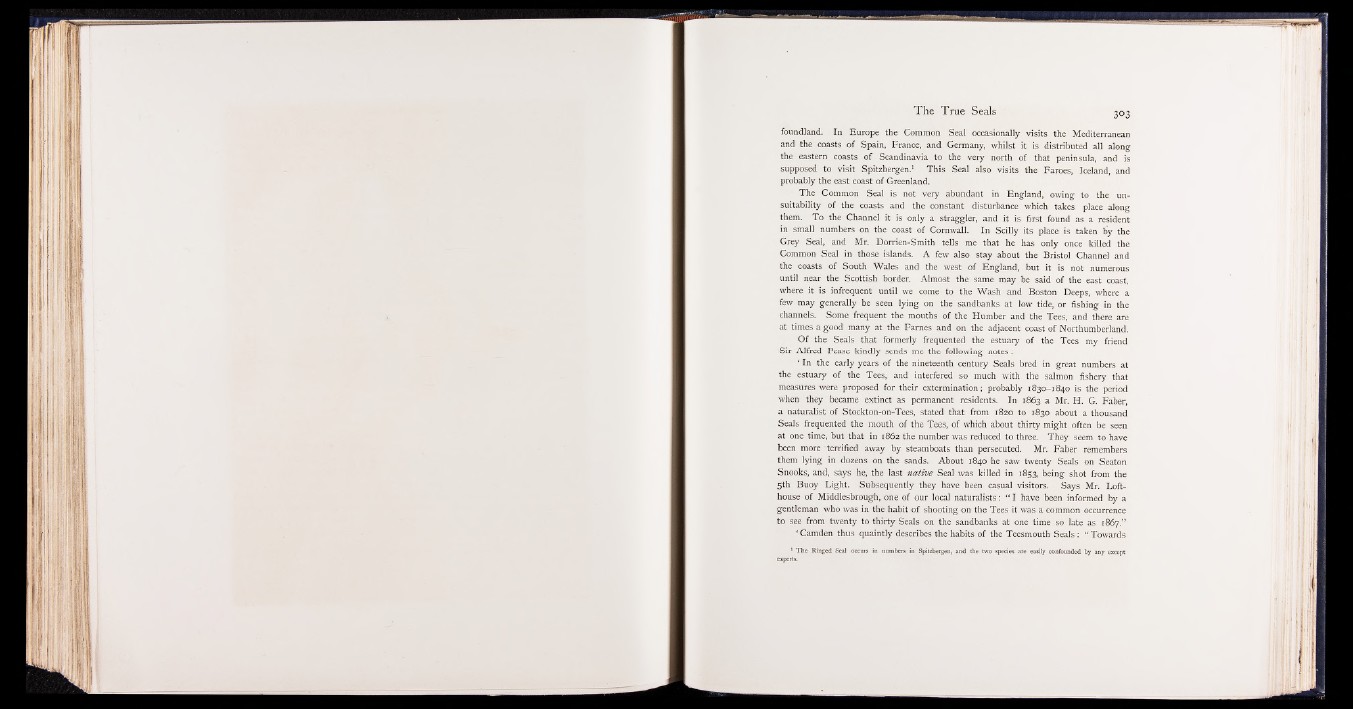
foundland. In Europe the Common Seal occasionally visits the Mediterranean
and the coasts of Spain, France, and Germany, whilst it is distributed all along
the eastern coasts of Scandinavia to the very north of that peninsula, and is
supposed to visit Spitzbergen.1 This Seal also visits the Faroes, Iceland, and
probably the east coast of Greenland.
The Common Seal is not very abundant in England, owing to the unsuitability
of the coasts and the constant disturbance which takes place along
them. To the Channel it is only a straggler, and it is first found as a resident
in small numbers on the coast of Cornwall. In Scilly its place is taken by the
Grey Seal, and Mr. Dorrien-Smith tells me that he has only once killed the
Common Seal in those islands. A few also stay about the Bristol Channel and
the coasts of South Wales and the west of England, but it is not numerous
until near the Scottish border. Almost the same may be said of the east coast,
where it is infrequent until we come to the Wash and Boston Deeps, where a
few may generally be seen lying on the sandbanks at low tide, or fishing in the
channels. Some frequent the mouths of the Humber and the Tees, and there are
at times a good many at the Fames and on the adjacent coast of Northumberland.
Of the Seals that formerly frequented the estuary of the Tees my friend
Sir Alfred Pease kindly sends me the following notes:
‘ In the early years of the nineteenth century Seals bred in great numbers at
the estuary of the Tees, and interfered so much with the salmon fishery that
measures were proposed for their extermination; probably 1830-1840 is the period
when they became extinct as permanent residents. In 1863 a Mr. H. G. Faber,
a naturalist of Stockton-on-Tees, stated that from 1820 to 1830 about a thousand
Seals frequented the mouth of the Tees, of which about thirty might often be seen
at one time, but that in 1862 the number was reduced to three. They seem to have
been more terrified away by steamboats than persecuted. Mr. Faber remembers
them lying in dozens on the sands. About 1840 he saw twenty Seals on Seaton
Snooks, and, says he, the last native Seal was killed in 1853, being shot from the
5th Buoy Light. Subsequently they have been casual visitors. Says Mr. Loft-
house of Middlesbrough, one of our local naturalists: “ I have been informed by a
gentleman who was in the habit of shooting on the Tees it was a common occurrence
to see from twenty to thirty Seals on the sandbanks at one time so late as 1867.”
‘ Camden thus quaintly describes the habits of the Teesmouth Seals : “ Towards
1 The Ringed Seal occurs in numbers in Spitzbergen, and the two species are easily confounded by any except
experts.